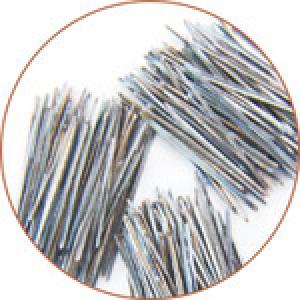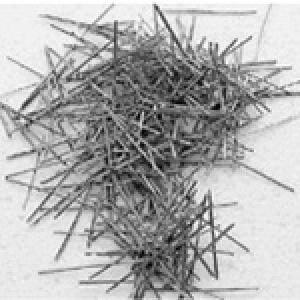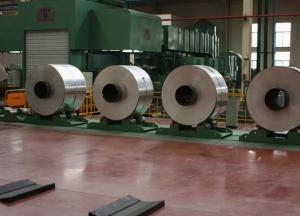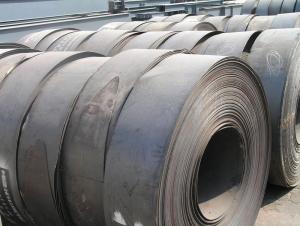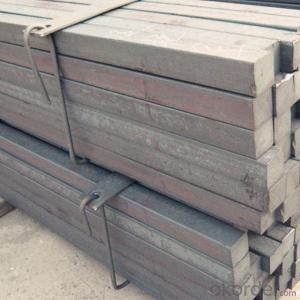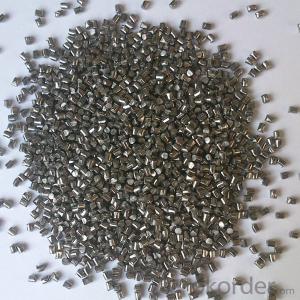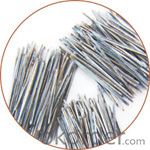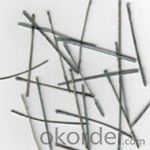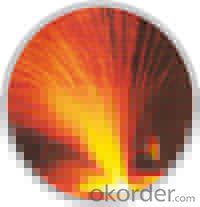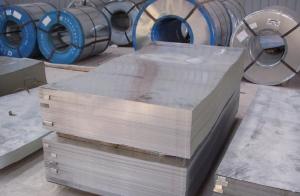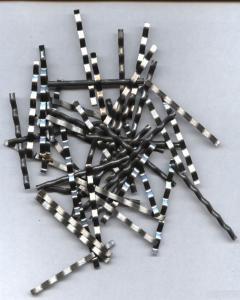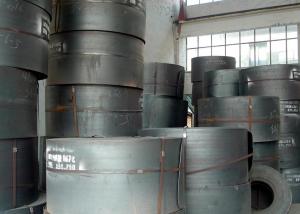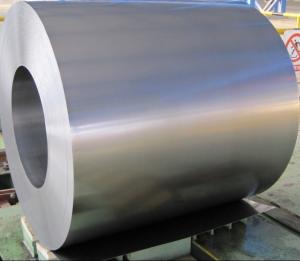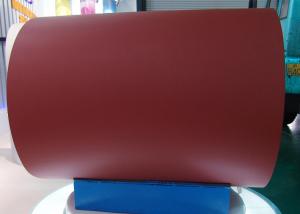Melt Extract Stainless Steel Fiber
- Loading Port:
- China Main Port
- Payment Terms:
- TT OR LC
- Min Order Qty:
- -
- Supply Capability:
- -
OKorder Service Pledge
Quality Product, Order Online Tracking, Timely Delivery
OKorder Financial Service
Credit Rating, Credit Services, Credit Purchasing
You Might Also Like
Melt Extract Stainless Steel Fiber
 |
- Q:What are the different types of steel pipes and tubes?
- There are several types of steel pipes and tubes, including seamless pipes, welded pipes, black steel pipes, galvanized pipes, and stainless steel pipes. Each type has its own unique characteristics and applications.
- Q:What are the applications of steel forgings in the defense industry?
- Steel forgings have numerous applications in the defense industry. They are commonly used in the production of high-strength components and parts for military vehicles, aircraft, and naval vessels. Steel forgings provide exceptional durability, resistance to extreme conditions, and superior mechanical properties, making them ideal for critical applications such as armor plating, weapon systems, and structural components. Additionally, steel forgings offer enhanced reliability and safety, ensuring optimal performance and protection in defense operations.
- Q:What are the properties of weathering steel for outdoor sculptures?
- Weathering steel, also known as corten steel, is a type of steel alloy that is specifically designed to develop a protective rust-like coating when exposed to the elements. This unique property makes it highly resistant to corrosion and allows it to withstand harsh outdoor conditions without the need for painting or maintenance. The rust-like patina that forms on the surface of weathering steel not only acts as a protective barrier but also adds a distinct aesthetic appeal to outdoor sculptures, blending them seamlessly with the natural environment. Additionally, weathering steel possesses excellent strength and durability, making it a popular choice for outdoor sculptures that require longevity and resistance to weathering.
- Q:How is steel used in the production of laboratory furniture?
- Steel is commonly used in the production of laboratory furniture due to its durability, strength, and resistance to corrosion. It is used for constructing lab benches, cabinets, and shelves, providing a sturdy and stable surface for experiments and equipment. Steel also allows for easy cleaning and maintenance, making it suitable for a sterile laboratory environment.
- Q:How do steel products withstand extreme temperatures and weather conditions?
- Steel products are able to withstand extreme temperatures and weather conditions due to their inherent strength and durability. Steel is a highly resilient material that can withstand high temperatures without melting or deforming. Additionally, steel is corrosion-resistant, making it resistant to the damaging effects of weather conditions such as rain, snow, and humidity. Furthermore, steel can be coated with protective finishes to enhance its resistance to extreme temperatures and weather, ensuring its longevity and reliability in various environments.
- Q:What are the different types of steel profiles used in architectural designs?
- There are various types of steel profiles commonly used in architectural designs, such as I-beams, H-beams, channels, angles, and tubes. These profiles offer different structural properties and can be used to create a wide range of architectural elements, including columns, beams, trusses, and frames. The choice of steel profile depends on the specific design requirements, load-bearing capacity, and aesthetic preferences of the project.
- Q:What are the common types of steel products used in the travel and tourism industry?
- Some common types of steel products used in the travel and tourism industry include luggage racks, display stands, crowd control barriers, fences, and security gates.
- Q:How is steel used in the construction of parking structures and garages?
- Steel is commonly used in the construction of parking structures and garages due to its strength, durability, and ability to support heavy loads. It is used for the framework, columns, beams, and decking, providing a sturdy and robust structure that can withstand the weight of vehicles and ensure the safety of the parking facility. Additionally, steel can be easily fabricated and erected, making it a popular choice in the construction industry for parking structures.
- Q:What are the different types of steel doors and windows?
- There are several different types of steel doors and windows available, including hollow metal doors and frames, steel entry doors, steel security doors, steel fire-rated doors, steel casement windows, and steel sliding windows.
- Q:What are the different types of steel springs and their applications?
- There are several different types of steel springs, each with its own unique characteristics and applications. Some common types include compression springs, which are used in a wide range of applications such as automotive suspension systems, mattresses, and industrial machinery. Tension springs, also known as extension springs, are commonly found in garage doors, trampolines, and various mechanical devices. Torsion springs, on the other hand, are used in many applications that require rotational force, such as in clothespins and door hinges. Additionally, there are specialized springs like wave springs, which are often used in electronics and medical devices due to their compact size and high reliability. Overall, the choice of steel spring type depends on the specific requirements of the application, including load capacity, flexibility, and space constraints.
1. Manufacturer Overview |
|
|---|---|
| Location | |
| Year Established | |
| Annual Output Value | |
| Main Markets | |
| Company Certifications | |
2. Manufacturer Certificates |
|
|---|---|
| a) Certification Name | |
| Range | |
| Reference | |
| Validity Period | |
3. Manufacturer Capability |
|
|---|---|
| a)Trade Capacity | |
| Nearest Port | |
| Export Percentage | |
| No.of Employees in Trade Department | |
| Language Spoken: | |
| b)Factory Information | |
| Factory Size: | |
| No. of Production Lines | |
| Contract Manufacturing | |
| Product Price Range | |
Send your message to us
Melt Extract Stainless Steel Fiber
- Loading Port:
- China Main Port
- Payment Terms:
- TT OR LC
- Min Order Qty:
- -
- Supply Capability:
- -
OKorder Service Pledge
Quality Product, Order Online Tracking, Timely Delivery
OKorder Financial Service
Credit Rating, Credit Services, Credit Purchasing
Similar products
New products
Hot products
Related keywords
